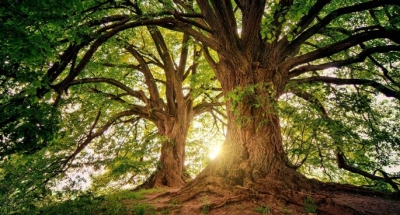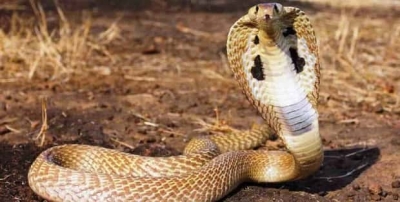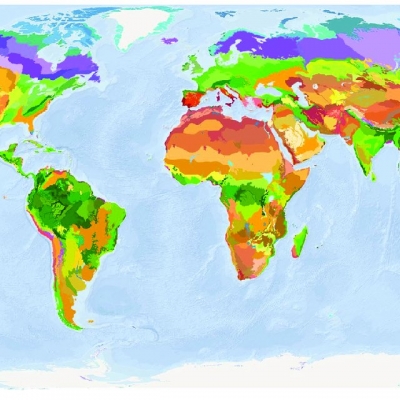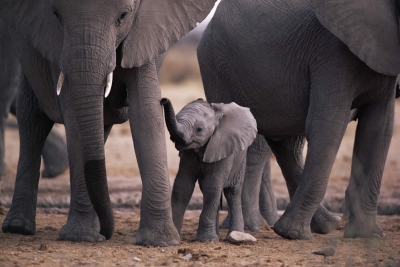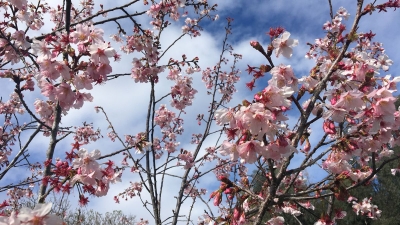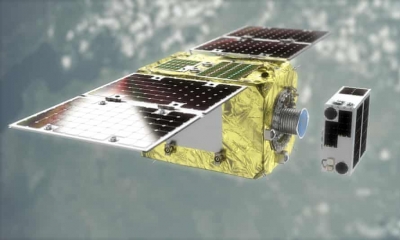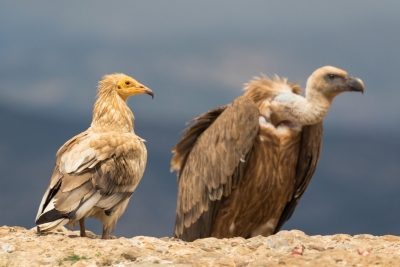
Vulture and the antiseptic wash
The vulture is a bird of prey that feeds on carrions (the decaying flesh of dead animals and humans). It has special adaptations to protect itself from the harmful pathogens present in the decaying carcass. One of them is its strong stomach acid, believed to be 10 to 100 times stronger than that of humans. So, the disease-causing germs are killed soon after they enter the body.
But the vulture's legs too could pick up harmful bacteria when it hops around animal carcasses. But the bird has no worries - it has an ingenious way to sanitise itself. The vulture gives an antiseptic wash to its legs and feet by passing urine and excreting faeces onto them. Its waste is also acidic and acts as a disinfectant.
Did you know birds do not have separate rectal and urinary openings? Birds eliminate all waste through a single opening called the doaca.
Wombat and the building blocks
You can identify most animals from the shape of the faeces it leaves behind. They can be quite unique. Take the wombat, for instance. It is the only known animal to produce cube-shaped scat. But why and how does it do it? This has remained a mystery for years. Scientists have tried to come with various theories. One popular postulate is that the wombat excretes cubes so that it can use them like building blocks. The marsupial, native to Australia and Tasmania, stacks its scat to mark its territory. Many animals, including the tiger, mark their territory using their scat but the wombat sets its boundaries pretty clear. The method by which the wombat produces the cubic scat is not well understood, but it is believed that its intestine stretches differently at various points. Areas of varying muscle thickness help shape the cubes sharp comers as the intestine undergoes rhythmical contractions, say the scientists who came up with this explanation in 2018. The wombat's intestine is also excellent at extracting water, making its poop very dry. This probably helps the wombat maintain that dice-like shape.
Sloth and its risky business
For the sloth, an animal known for its slow movement, a trip to the loo can be a risky business. Rainforests of South and Central America are its homes, where it spends 90% of its time munching away leaves or hanging upside down on the tree top. The tree canopy gives it the perfect camouflage, protecting it from its predators. But once a week, the sloth leaves the safety of its homes to... defecate. It digs a hole on the ground to do its 'business'.
While the animal's slow movements help it remain undetected by its predators while on the tree, it becomes a limitation while on the ground as it cannot quickly flee from its attackers. But why does a sloth risk its life and insist on pooping on the ground? One of the hypotheses is that it could have an ecological significance and scientists are still trying to understand what exactly it is.
Parrotfish and the white beach
Strolling on the white beaches of Hawaii is on the bucketlist for many of us. While you are dreaming about it make a mental note of this interesting fact a significant portion of that pristine, white, beautiful sand is actually parrotfish's excreta. The parrotfish (called uhu in Hawaiin) is a colourful, tropical creature that spends about much of its day eating algae off coral reefs. It uses its parrot like beak to bite and scrape algae off dead corals. It grinds the inedible calcium carbonate part of its meal (mostly corals exoskeletan) and excretes it as sand. The parrotfish does not have stomach and so this waste particles pass straight through the long intestine, exploding in a cloud of sand out its body. How much sand does a fish help create? Well, larger parrotfish are like sand factories, producing as much as 840 pounds of sand per year!
MORE FACTS
- The study of faeces of animals is called scatology.
- The waste of whale acts like fertilizer for the oceans.
- The demodex mites that live on your face do not excrete. What a relief!
- The Tambaqui fish are marine pollinators of sorts. They eat the seeds of sea plants along the floor, and poop out undigested seeds quite some distance away, which helps to further the ecosystem along the bottom of the ocean.
- Some caterpillars are masters of disguise. They ward off hungry birds by looking like something really distasteful: bird droppings.
Adelie penguins and the pink potty
If you ever wished to see penguins upclose, this warning is for you - stay a few feet away from them. Penguins are known for their projectile defecation behaviour. They shoot their guano (penguin poop) as far as four feet away from their body. Scientists believe that penguins developed this behavior in order to keep their body relatively dean of faecal bacteria.
While this is fascinating, scientists are particularly interested in the guano of the Adelie penguin, because it is pink and plentiful The Adelie penguin lives across the coast of Antarctica and nearby islands, and thrive on a diet that is dominated by tiny pinkish crustaceans called krill, which gives its guano a striking pink colour. (When the penguins are munching on fish. their guano tends to come out white.) That poop stains the ground and their bodies. When a single penguin relieves itself, its waste hits the ground and decomposes. But when an entire colony of penguins discharges its load, it shows up pretty well in satellite images, especially because it contrasts with the surrounding white ice.
This is helpful for scientists who want to locate and count Adelie penguins all the way down in one of the most remote places on Earth.
Picture Credit : Google
